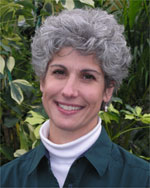Wow, what a day! The 6th annual Gardenpalooza was a huge success. We packed Fir Point Farms on April 5th, despite a cold windy day, and nearly 9,000 people enjoyed a full free day of fun and everything gardening. Gardenpalooza is just our kick off to the gardening season. There are still a ton of other plant sales around. You can also see more and more blooms at your local garden center every day. It is spring, and that means things are changing fast! Don’t blink or you will miss it.
This week we featured...
23rd Annual Tulip Fest
 William and Judy visited the Woodburn Tulip Festival at the Wooden Shoe Tulip farm for the 23rd annual Woodenshoe Tulip Fest (1-800-711-2006). This event showcases the fields full of beautiful tulip blooms and runs from mid-March to the 27th of April. This year the fest was extended until the 27th because of the cold wet weather. The blooms were held back but now they are ready to pop! Barb Iverson showed us over 18 acres of tulips in bloom, and the bloom was incredible! The flower fields may be just getting started but the farm is full of events and it is still a must see for anyone, even non-flower lovers. Every weekend they are packed with different activities including a wooden shoe carver, pony rides, arts and crafts, steam tractors, wine tasting and other entertainment for a small fee of $5 a car. The rest of the week it is free! Even when the weather is a little damp, the fields never disappoint. Bring a camera; this is a scene you have to capture on film!
William and Judy visited the Woodburn Tulip Festival at the Wooden Shoe Tulip farm for the 23rd annual Woodenshoe Tulip Fest (1-800-711-2006). This event showcases the fields full of beautiful tulip blooms and runs from mid-March to the 27th of April. This year the fest was extended until the 27th because of the cold wet weather. The blooms were held back but now they are ready to pop! Barb Iverson showed us over 18 acres of tulips in bloom, and the bloom was incredible! The flower fields may be just getting started but the farm is full of events and it is still a must see for anyone, even non-flower lovers. Every weekend they are packed with different activities including a wooden shoe carver, pony rides, arts and crafts, steam tractors, wine tasting and other entertainment for a small fee of $5 a car. The rest of the week it is free! Even when the weather is a little damp, the fields never disappoint. Bring a camera; this is a scene you have to capture on film!
Twisted Garden Plants
 Getting twisted in the garden doesn’t mean you are having a little risky business happening. We are talking about plants; specifically plants that are twisted in the appearance or texture. We found a bunch at Cornell Farm (503-292-9895). Deby Barnhart had found plants of all different sizes to show us. First she had a dwarf Alberta Spruce that was trimmed into a spiral shape. This one will require a lot of maintenance to keep it in shape, but there is nothing better for a front entryway. A really twisted plant was next, the Weeping Blue Atlas Cedar. This one is trained in to a serpentine shape and would be really outstanding against a wall or fence. Dwarf Yellow Hinoki’s have a great twisted foliage that is accented by the golden tips to the new growth. Harry Lauder’s Walking Stick is a relative of the hazelnut, but is much different than its upright cousin. It also has the added benefit of the catkins during the late winter and early spring. A mock orange also called Poncirus ‘Flying Dragon’ was next. This plant is interesting because of the many different qualities it has. It has very fragrant white blooms in the spring followed by dark green foliage. In the fall it has a small, non-eatable, orange shaped fruit. The most interesting part to this plant is the twisted stems and curved thorns. We also saw a small curly plant that can become a big boy in time called Cryptomeria ‘Spiraliter Falcata’ with a unique curly branch that could reach 20 feet tall when fully grown! We moved to a smaller euphorbia next. Euphorbia is a twisted plant in general, but the ‘Despina’ variety has drooping blooms and tips which makes it really unique. Finally we saw the Spike Moss ‘Emerald Isle’ which looks almost like a small green brain! If you are looking to get twisted in the garden check out these and many other ‘twisted’ plants at your local garden center.
Getting twisted in the garden doesn’t mean you are having a little risky business happening. We are talking about plants; specifically plants that are twisted in the appearance or texture. We found a bunch at Cornell Farm (503-292-9895). Deby Barnhart had found plants of all different sizes to show us. First she had a dwarf Alberta Spruce that was trimmed into a spiral shape. This one will require a lot of maintenance to keep it in shape, but there is nothing better for a front entryway. A really twisted plant was next, the Weeping Blue Atlas Cedar. This one is trained in to a serpentine shape and would be really outstanding against a wall or fence. Dwarf Yellow Hinoki’s have a great twisted foliage that is accented by the golden tips to the new growth. Harry Lauder’s Walking Stick is a relative of the hazelnut, but is much different than its upright cousin. It also has the added benefit of the catkins during the late winter and early spring. A mock orange also called Poncirus ‘Flying Dragon’ was next. This plant is interesting because of the many different qualities it has. It has very fragrant white blooms in the spring followed by dark green foliage. In the fall it has a small, non-eatable, orange shaped fruit. The most interesting part to this plant is the twisted stems and curved thorns. We also saw a small curly plant that can become a big boy in time called Cryptomeria ‘Spiraliter Falcata’ with a unique curly branch that could reach 20 feet tall when fully grown! We moved to a smaller euphorbia next. Euphorbia is a twisted plant in general, but the ‘Despina’ variety has drooping blooms and tips which makes it really unique. Finally we saw the Spike Moss ‘Emerald Isle’ which looks almost like a small green brain! If you are looking to get twisted in the garden check out these and many other ‘twisted’ plants at your local garden center.
Chinese Camellias
 Camellias are a great garden plant but people usually don’t know about all the different types that are available. It is sometimes next to impossible to see a good selection in bloom. We are lucky that one of the best displays of camellias in the Portland area is at the Portland Classical Chinese Garden (503-228-8131). Bill gave William a tour of the grounds to show him parts of the camellia collection at the garden. We first saw 2 different varieties in one area. It looked like they were from the same bush! One was ‘Mountain Tea’ and the other was ‘Dr. Robert Schwartz’. Then we talked about the light pink ‘Nuccio’s Pearl’. This one is a crowd favorite and has a huge amount of light pink blooms with darker pink edges. Next was one of the most interesting ones in the garden, ‘Kujaku-tsubaki’. This one is has a weeping form that spreads out on the ground with very interesting blooms that look almost like a red daisy. The other one that has a unique look to it is the ‘transnokoensis’. This one has small single blooms that are white with a spot of pink on the outside of the bloom. Very beautiful! Finally, we saw one that is a real standout, ‘Jury’s Yellow’. This one is outside of the garden walls so everyone can see it and it is really putting on a show! The double blooms are a yellowy, cream color that just seems to shine in the sun! If you want to see more camellias you need to pay a visit to the garden soon!
Camellias are a great garden plant but people usually don’t know about all the different types that are available. It is sometimes next to impossible to see a good selection in bloom. We are lucky that one of the best displays of camellias in the Portland area is at the Portland Classical Chinese Garden (503-228-8131). Bill gave William a tour of the grounds to show him parts of the camellia collection at the garden. We first saw 2 different varieties in one area. It looked like they were from the same bush! One was ‘Mountain Tea’ and the other was ‘Dr. Robert Schwartz’. Then we talked about the light pink ‘Nuccio’s Pearl’. This one is a crowd favorite and has a huge amount of light pink blooms with darker pink edges. Next was one of the most interesting ones in the garden, ‘Kujaku-tsubaki’. This one is has a weeping form that spreads out on the ground with very interesting blooms that look almost like a red daisy. The other one that has a unique look to it is the ‘transnokoensis’. This one has small single blooms that are white with a spot of pink on the outside of the bloom. Very beautiful! Finally, we saw one that is a real standout, ‘Jury’s Yellow’. This one is outside of the garden walls so everyone can see it and it is really putting on a show! The double blooms are a yellowy, cream color that just seems to shine in the sun! If you want to see more camellias you need to pay a visit to the garden soon!
Planting Asparagus
 Some people have tried asparagus in the past and have not had too much luck. Jack Bigej from Al’s Garden Center (503-981-1245) loves asparagus and gave us some tips for planting success. He uses a variety called Jersey Knight which is made up of all male plants that will not go to seed, plus it yields a bigger crop. First, you dig a well-drained hole that is about a foot deep. That is the key…good drainage! Asparagus doesn’t like standing water. Then, lightly cover the root. When the plants get to be about a foot tall you fill in the rest of the hole. Don’t harvest the first year. Lightly harvest the second year and cut all you want the 3rd year and beyond. The plant will produce a good crop for up to 20 years after that.
Some people have tried asparagus in the past and have not had too much luck. Jack Bigej from Al’s Garden Center (503-981-1245) loves asparagus and gave us some tips for planting success. He uses a variety called Jersey Knight which is made up of all male plants that will not go to seed, plus it yields a bigger crop. First, you dig a well-drained hole that is about a foot deep. That is the key…good drainage! Asparagus doesn’t like standing water. Then, lightly cover the root. When the plants get to be about a foot tall you fill in the rest of the hole. Don’t harvest the first year. Lightly harvest the second year and cut all you want the 3rd year and beyond. The plant will produce a good crop for up to 20 years after that.
Trilliums
 One of the signature woodland plants of the spring is the trillium. These woodland wonders naturalize well in shady areas under trees and can fill a niche if you need a plant for these hard to grow areas. We found a huge selection of trilliums at Extra Perennial Nursery (503-628-1492) in Scholls. Ken Korpowski told us about the types of trilliums they have and showed off the newest of the bunch, the Kurabayoshi which is a native to southern Oregon forests. They have outstanding deep red flowers that grow upright. He also had one that he teased us with, a rare yellow form of the Kurabayoshi which is available in limited quantities this year. They are easy to grow if you know how and Extra Perennial has a sheet of instructions to help you be successful!
One of the signature woodland plants of the spring is the trillium. These woodland wonders naturalize well in shady areas under trees and can fill a niche if you need a plant for these hard to grow areas. We found a huge selection of trilliums at Extra Perennial Nursery (503-628-1492) in Scholls. Ken Korpowski told us about the types of trilliums they have and showed off the newest of the bunch, the Kurabayoshi which is a native to southern Oregon forests. They have outstanding deep red flowers that grow upright. He also had one that he teased us with, a rare yellow form of the Kurabayoshi which is available in limited quantities this year. They are easy to grow if you know how and Extra Perennial has a sheet of instructions to help you be successful!

























